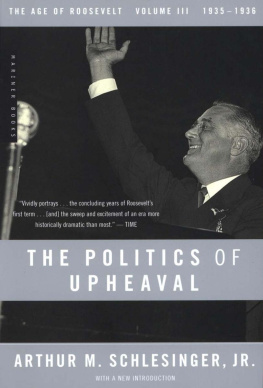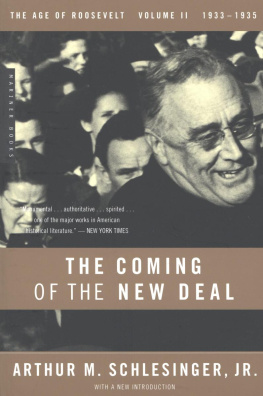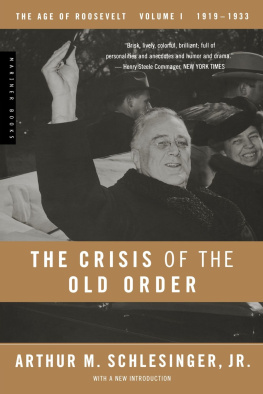What the photographer Weegee did for New York sixty years ago with his camera, Toni Schlesinger has done for twenty-first-century New York with her words. These portraits of Gothams people caught in their habitats limn the citys spirit and essence as nothing else written in a long, long time. They are hypnotic reading.
NICHOLAS VON HOFFMAN
Toni Schlesingers book describes the relationship of the accidental to the profound, the domestic to the totally weird; she visits, draws out, and celebrates this permanent impermanence better than anyone ever has. The book is so funny, so rich, so full of wonderful surprisesthe people you know and the people you wish you knew and the people you never want to know, each one in her/his box, and all jumbled together, like New York City itself.
TONY KUSHNER
You just cant get this stuff over the phone. You have to ride the train, climb the stairs, ring the doorbell, and charm your way inside. And then the hard work begins: convincing the people to open their homes, their hearts, and their lives. Toni Schlesinger crosses the threshold with her own deep curiosity about the fascinating lives that all of us secretly live at home. She gets an eyeful, and so do we!
ELLIS HENICAN, NEWSDAY
Toni Schlesingers Shelter columns are like playscripts, revealing the theatricality of New York life through her animated relationship with her subjects. Part reporter and part poet, Schlesinger has written a unique and beautiful book that is a delight to read.
CLAUDIA GONSON, THE MAGNETIC FIELDS
The most three-dimensional portrait of New York I know! Toni Schlesingers book is composed of hundreds of magnificent dots of the lives and apartments of real New Yorkers. Taken together, her book forms a literary DPI that conveys real life in New York with unsurpassed clarity.
ALEKSANDR MELAMID, ARTIST
Toni Schlesinger, with her no-holds-barred viewpoint on New York lifestyles, interviews her subjects with associative questions that can often sound like rap poetry, exposing the idiosyncratic layers of domestic life caught in the cracks of the mad, mad world of the city.
WID CHAPMAN, PARSONS SCHOOL OF DESIGN


PUBLISHED BY
PRINCETON ARCHITECTURAL PRESS
37 EAST SEVENTH STREET
NEW YORK, NEW YORK 10003
FOR A FREE CATALOG OF BOOKS, CALL
1.800.722.6657.
VISIT OUR WEB SITE AT WWW.PAPRESS.COM.
2006 TONI SCHLESINGER
ALL RIGHTS RESERVED
PRINTED AND BOUND IN CANADA
09 08 07 06 5 4 3 2 1 FIRST EDITION
NO PART OF THIS BOOK MAY BE USED OR
REPRODUCED IN ANY MANNER WITHOUT
WRITTEN PERMISSION FROM THE PUBLISHER,
EXCEPT IN THE CONTEXT OF REVIEWS.
FRONT COVER: LINDA EMOND, PHOTOGRAPHED
BY GREG MILLER
BACK COVER, CLOCKWISE FROM TOP LEFT:
PHOTOGRAPHED BY JAY MUHLIN, BRIAN
KENNEDY, GREG MILLER, JAY MUHLIN, GREG
MILLER, AND MICHAEL SOFRONSKI
THE PHOTOGRAPHS IN THIS BOOK ARE USED BY
PERMISSION OF THE PHOTOGRAPHERS CITED AND
ARE COPYRIGHTED BY THEM.
EVERY REASONABLE ATTEMPT HAS BEEN MADE TO
IDENTIFY OWNERS OF COPYRIGHT. ERRORS OR
OMISSIONS WILL BE CORRECTED IN SUBSEQUENT
EDITIONS.
EDITING: CLARE JACOBSON
DESIGN PRINT EDITION: DEB WOOD
EDITORIAL ASSISTANCE: TIFFANY WEY,
DOROTHY BALL, LAUREN NELSON
SPECIAL THANKS TO: NETTIE ALJIAN, NICOLA
BEDNAREK, JANET BEHNING, BECCA CASBON,
PENNY (YUEN PIK) CHU, RUSSELL FERNANDEZ,
JAN HAUX, JOHN KING, NANCY EKLUND
LATER, LINDA LEE, KATHARINE MYERS, SCOTT
TENNENT, JENNIFER THOMPSON, PAUL
WAGNER, AND JOSEPH WESTON OF PRINCETON
ARCHITECTURAL PRESS
KEVIN C. LIPPERT, PUBLISHER
LIBRARY OF CONGRESS
CATALOGING-IN-PUBLICATION DATA
SCHLESINGER, TONI
FIVE FLIGHTS UP AND OTHER NEW YORK
APARTMENT STORIES / TONI SCHLESINGER.
P. CM.
ISBN-13: 978-1-56898-585-5 (DIGITAL)
1. HOUSINGNEW YORK (STATE)NEW YORK.
2. APARTMENT HOUSESNEW YORK (STATE)
NEW YORK. 3. NEW YORK (N.Y.)SOCIAL
CONDITIONS. I. TITLE: 5 FLIGHTS UP AND
OTHER NEW YORK APARTMENT STORIES. II. TITLE.
HD7304.N5S355 2006
974.71DC22
2005032673
INTRODUCTION
How did I end up in so many living rooms?
It started one freezing January day when I went to see Don Forst, editor of the Village Voice, about a job, and he looked up at the ceiling and said, We have something, but you probably wouldnt want to do it. Its just a column on people, their homes, just this kind of Q & A. By saying it that way, he probably thought that I would insist on doing it.
I did say yes, but not because I wanted to go inside peoples rooms and discuss their chairs. No, it was because I knew the power of the interview and the spoken word. I had long ago realized that prose is the past. It can put people to sleep (except for what Im writing now). The spoken word is in the momentit can shift and change. There is conflict. It is questioning, Socratic. As for the home-decoration part, I knew rooms were just a lot of stage sets, backdrops for the big eventthe drama of the human soul. It is not the granite counter that matters for cutting up the carrot. It is the heart one must pay attention to.
What I did not know, and Forst did, was the drama implicit in the struggle for finding space and keeping a sense of home in the city.
My first Shelter column in February 1997 was about Allure writer Lois Morris, who lived in an East Village back house, the kind from the late 1800s when speculators stuffed European immigrants in buildings behind buildings without light or air, and people had to go to the bathroom outside, though Loiss apartment had been renovated. When she stood near her orange Formica night table and started talking about the 1980s television set that she brought from her parents house in Glencoe, Illinois, I went into a trance. Years later, I still have not come out of it.
Every Shelter interview is like walking into a moviethe mysterious hallway, the story about the father, the boyfriend who got mad and threw a china elephant across the room. It is as if I am on the sea, carried far out on the waves. If people start bringing out family photos, the day is gonethe mother in Cuba standing in the half light, the Kodachrome print of a child with his brother on a hill.
But the most interesting aspect of Shelter is that, because there are no expectations, no need to overthrow the government or expose the Department of Sanitation, the column is not supposed to be anything more than a few moments in the afternoon, a conversation that is somewhat focused on where the people are sitting and how they got there. In this smaller situation, the talk can expand, grow large, so that it becomes a story of peoples pasts, their parentss pasts, the citys past.
The singular repeated format has its benefits. The protagonist never grows old. Though, as in a serial, Shelter adventures have begun to take on a Nancy Drew aspectthe secret of the privatization of the old union co-op. But the formal sameness has made for infinite variations. A person can read aloud his electric bill. We can talk about Antonioni movies, steel structures. Anything about space, furniture, New York City is appropriate for discussion, not to mention peoples hometowns, their dream towns, the situation of all the towns in the world. And anything about lifethe invention of the light bulb, a mothers preference for beige.














